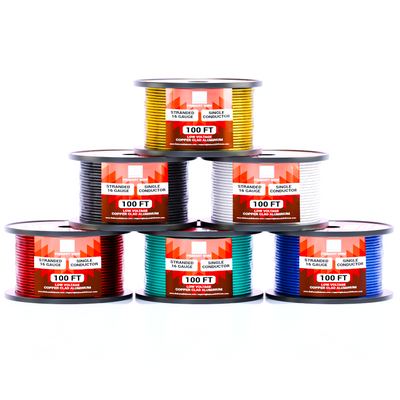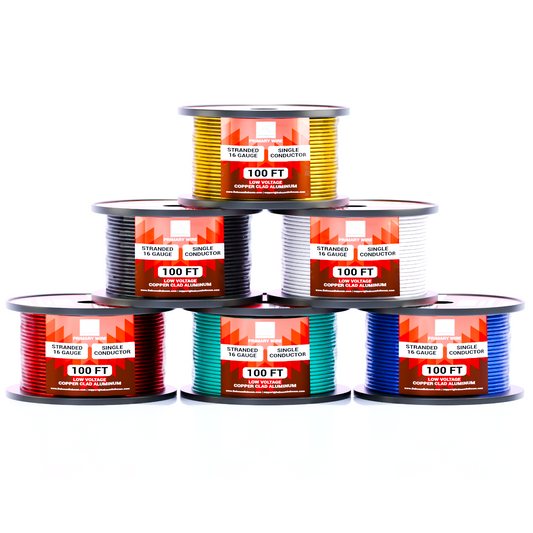
How to Install a New Light Fixture: A Step-by-Step Guide
Share
Introduction
Installing a new light fixture is an excellent way to update your home’s look and improve lighting. Whether you're replacing an old fixture or adding a new one, this guide will walk you through the process, ensuring safety and functionality from start to finish. By carefully following each step, you can successfully complete this project with confidence.
1. Gather the Necessary Tools and Materials
Essential Tools
Before you start, make sure you have all the tools needed for the job. The right tools will make the installation process smoother and safer.
- Screwdrivers (flat-head and Phillips): For removing screws from the old fixture and installing the new one.
- Wire strippers: To strip the insulation from the wire ends.
- Voltage tester: To ensure the power is off before you start working.
- Ladder: To reach the ceiling fixture safely.
- Pliers: For bending and twisting wires.
- Wire nuts: To connect the wires securely.
- Electrical tape: For insulating wire connections.
- Tape measure: To measure distances and ensure accurate placement of the fixture.

Materials for Installation
Having the correct materials ensures that your new fixture is installed properly and safely.
- New light fixture: Choose a fixture that fits your decor and meets your lighting needs.
- Correct wire gauge: Use 14 or 12 gauge wire for most lighting installations, depending on the power requirements.
- Mounting hardware: Screws, brackets, and other necessary components often come with the fixture but verify that you have everything before starting.

2. Turn Off the Power
Locate the Breaker Box
Safety first! Turning off the power is crucial to avoid electrical shocks.
- Find your breaker box: It's usually located in a basement, garage, or utility room.
- Identify the breaker for the light fixture: This is often labeled.
- Switch the breaker to "off": This cuts power to the fixture.
Verify Power is Off
Using a voltage tester ensures that the power is indeed off, providing an extra layer of safety.
- Test the wires at the old fixture: Use the voltage tester to check for live wires.
- Ensure no voltage is detected: Proceed only when the tester confirms that the power is off.
- Double-check other switches: Ensure that all power sources to the area are off, including switches and dimmers that could be connected to the fixture.

3. Remove the Old Fixture
Disconnect the Fixture
Carefully removing the old fixture prepares the area for the new installation.
- Unscrew the fixture: Remove the screws or nuts holding the fixture to the ceiling.
- Lower the fixture gently: This will expose the wiring.
- Disconnect the wires: Unscrew the wire nuts and separate the wires. Take note of how the wires are connected for reference.
Prepare the Area
Ensuring the area is ready for the new fixture is crucial for a smooth installation.
- Clean the area: Remove any dust or debris.
- Inspect the electrical box: Make sure it’s secure and in good condition. Tighten any loose screws or bolts.
- Check the wiring: Inspect the exposed wiring for any signs of damage or wear. Replace any wires that appear frayed or damaged.

4. Choose the Right Wire Gauge
Understanding Wire Gauge
Choosing the correct wire gauge ensures safe and efficient operation of your new light fixture.
- Wire gauge: Refers to the diameter of the wire. A lower gauge number means a thicker wire, which can carry more current.
- Importance of the right gauge: Using the correct wire gauge prevents overheating and reduces the risk of electrical fires.
Selecting the Correct Gauge
Use this table to help guide the selection of wire gauges for various components in a home security system. Ensure that the wire gauge matches the power requirements of your equipment to prevent issues such as voltage drop or overheating. Adjustments may be needed based on specific equipment specifications and installation conditions.
| Wire Gauge (GA) | Maximum Current (Amps) | Typical Use |
|---|---|---|
| 14 GA | 15 | Standard lighting |
| 12 GA | 20 | High-power lighting |
Most standard lighting uses 14 gauge, but high-power fixtures may need 12 gauge. Choosing the right wire gauge is critical for maintaining safety and efficiency in your electrical system.

5. Install the New Fixture
Attach the Mounting Bracket
The mounting bracket is a crucial component that supports the light fixture.
- Install the bracket: Attach the mounting bracket to the ceiling electrical box using screws.
- Ensure it’s secure: Make sure the bracket is firmly in place. It should not wobble or move when you tug on it gently.
- Align the bracket: Ensure the bracket is level and properly aligned with the fixture's placement.
Connect the Wires
Properly connecting the wires ensures that the fixture operates safely and efficiently.
- Match wire colors: Typically, black (or red) is hot, white is neutral, and green or bare is ground.
- Use wire nuts: Twist the wires together and secure them with wire nuts.
- Secure connections: Wrap the connections with electrical tape to ensure they stay in place. Double-check that all connections are tight and secure.
Attach the Fixture
Mounting the fixture properly ensures it stays securely in place and functions correctly.
- Attach the fixture to the bracket: Use the screws or nuts provided.
- Install the light bulbs: Use bulbs recommended by the manufacturer.
- Attach any decorative elements: If your fixture has shades or covers, attach them according to the manufacturer’s instructions.

6. Test the Installation
Restore Power
Turning the power back on is the final step to test your installation.
- Switch the breaker to "on": This restores power to the fixture.
- Turn on the light switch: Check that the fixture works.
- Verify functionality: Test the fixture with the light switch to ensure it operates correctly.
Check for Issues
Ensuring the fixture operates correctly prevents future problems.
- Look for flickering: Make sure the light is steady. Flickering can indicate a loose connection or faulty wiring.
- Feel for warmth: The fixture should not overheat. If it feels excessively warm, turn off the power and check your connections.
- Inspect for noise: Listen for any buzzing or humming sounds, which can indicate a problem with the installation.

Conclusion
Installing a new light fixture is a rewarding project that can brighten up your home. By following this simple guide and choosing the right wire gauge, you can ensure a safe and successful installation. Always remember to turn off the power before starting and use the proper tools and materials. With careful preparation, you'll have your new light fixture up and shining in no time. Proper installation not only enhances the aesthetic appeal of your home but also ensures long-term functionality and safety.








